IndoEthnoExp. Part II. Dharamshala, JammuMapMay 23 — June 13, 2015 In order to get inside an Indian airport first you have to convince the guard at the entrance that you have a ticket and that the last name on it matches the last name in your passport. In contrast to Pakistan, where you can only get into the airport if you have a printout of your ticket, India has made progress— you can show him the ticket on your cellphone screen. Next you have to do the same thing all over again inside the airport — about 30 metres from the main entrance. Then you have to put your suitcases through an X-ray scanner. Only then can you approach the check-in desk. It must be said that Indian ideas about security are incomprehensible to a European. Let’s say you missed your flight. You can’t just exit the airport. The guard at the door will ask you to prove that you missed your flight. Then you have to go and see an airline representative, who will write ten lines in the record book. Only then will they let you leave the building. In India it’s very common to have different kinds of water tanks installed on the roof. At first glance this looks like a dumb, fat eagle. But it is in fact a beautiful and capacious water tank. 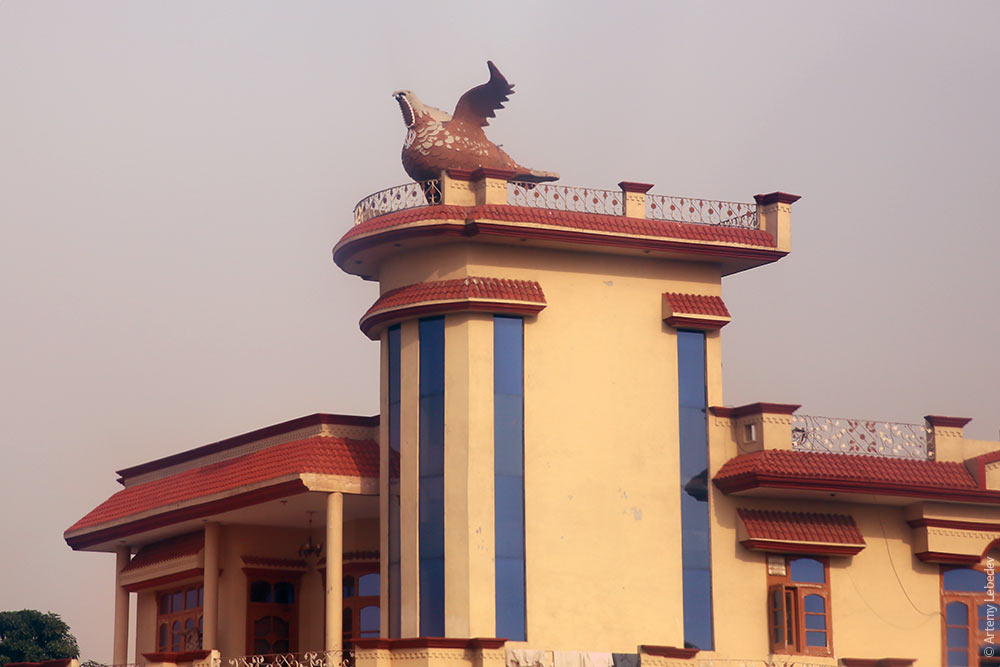 Long haul lorry drivers pose with mirrors, which they’ve taken off their trucks for some reason. Either to clean them or to make sure they don’t get stolen. 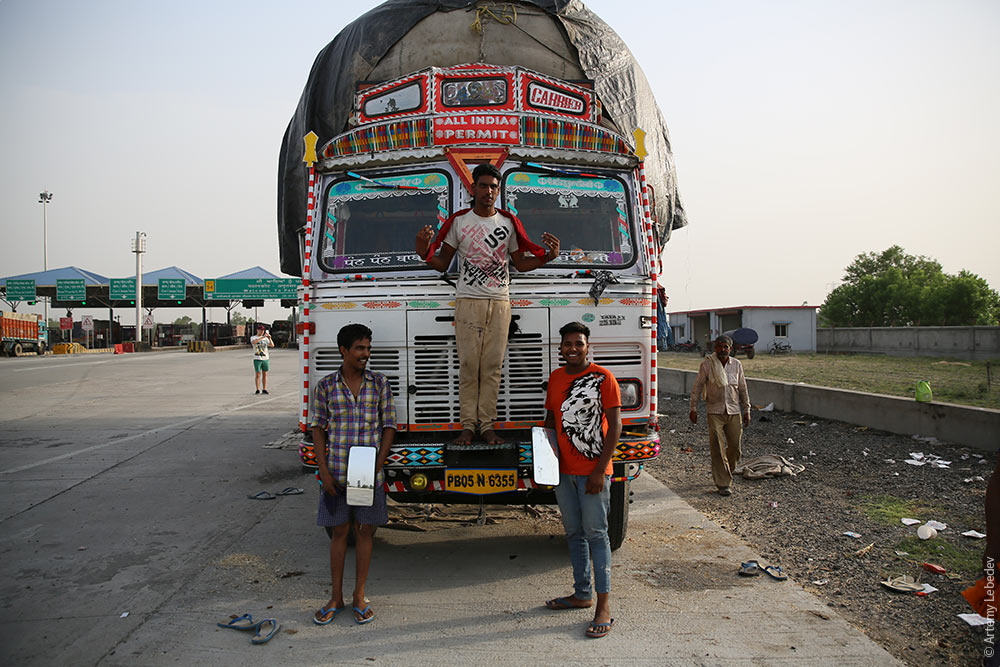 What a fantastic Indian lorry model. It looks as if they attached wheels and a driver’s cab to a freight container. 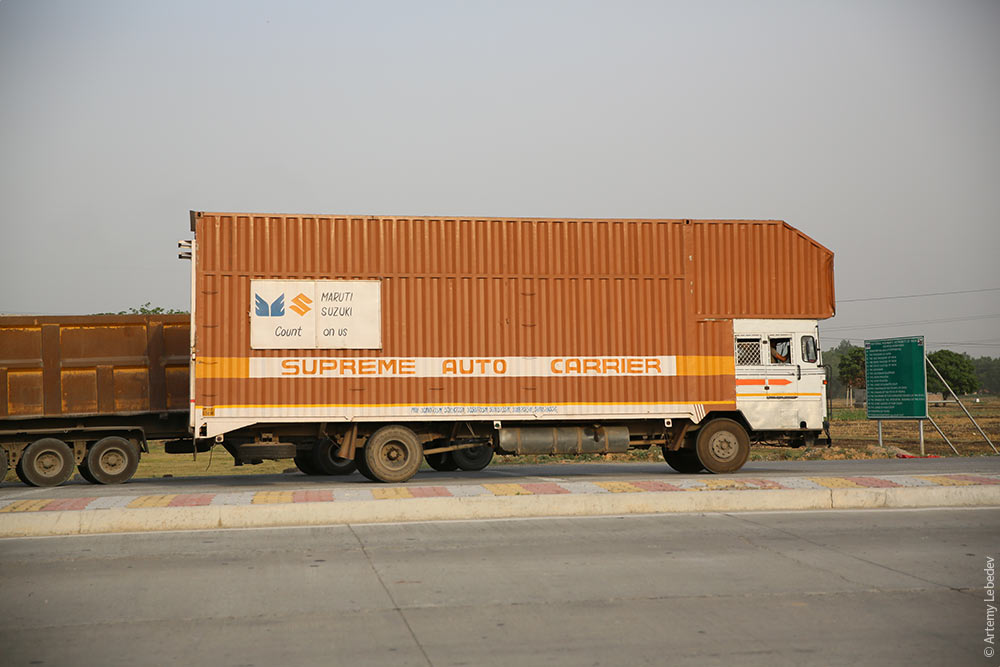 At the toll road collection points there are special side roads for motorcyclists, who ride free of charge. 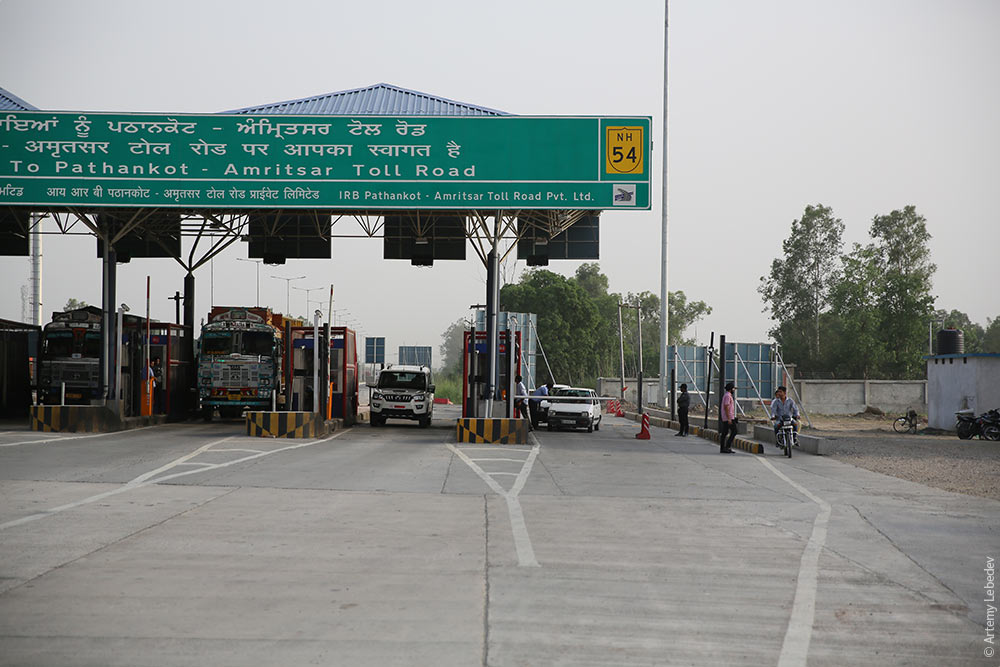 DharamshalaMapDharamshala is the city where the Dalai Lama, the chief Buddhist in exile, resides. And there he is, the man himself. Hang on, no, I’m mistaken, that’s actually the manager of some random café. 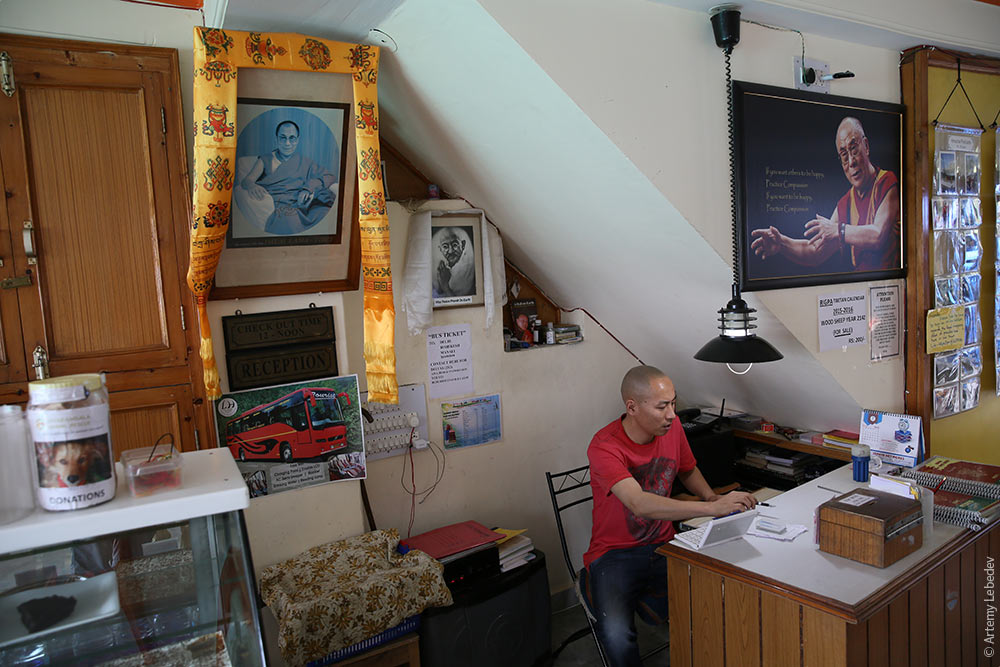 This is a hilly, cramped, multi-level city.  It’s not every driver who can muster up the courage to drive as far as our hostel. The locals are the only ones who aren’t afraid. 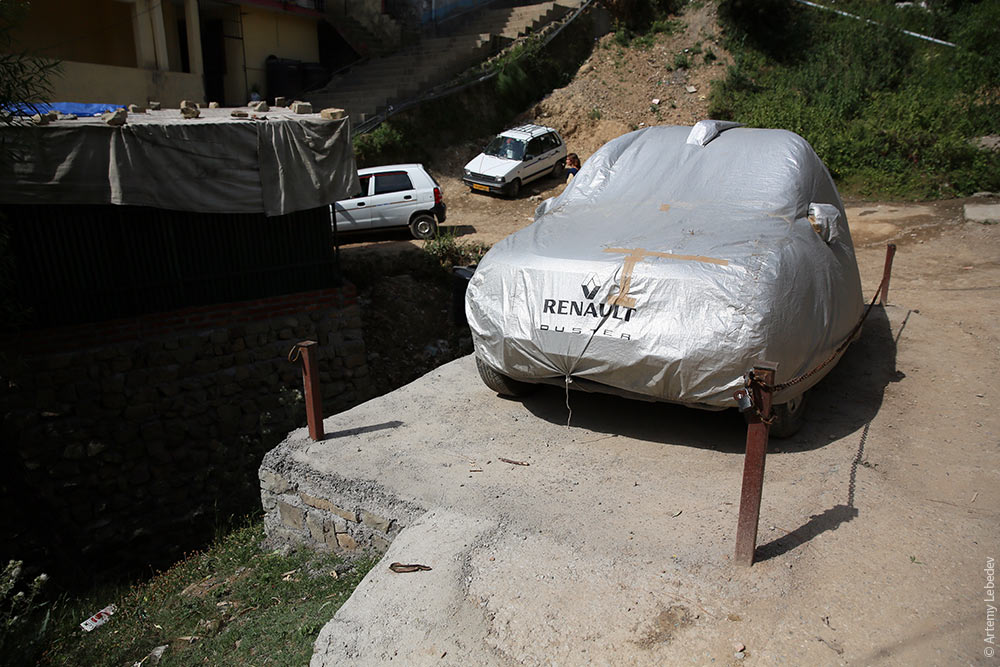 For some reason, there are pedestrian lights at the main intersection. I am sure that they have never worked, not even for a day. And never will. 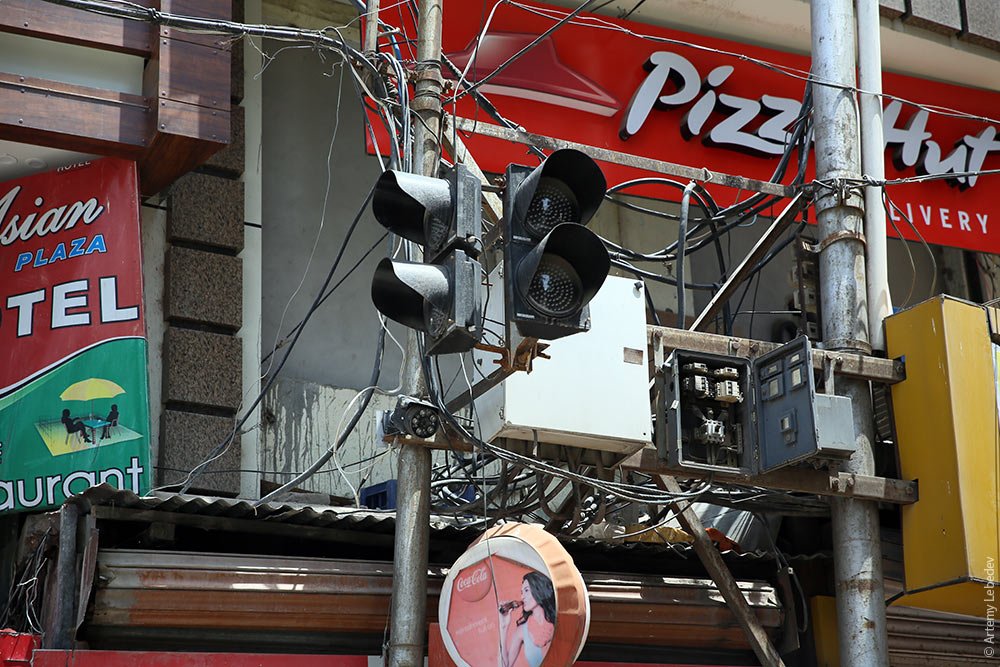 Here, in contrast to Chinese Tibet, the issue of Tibetan liberation is not off limits (on the flipside, you can’t joke about the liberation of Kashmir in these parts). The phrase “Free Tibet” has become so hackneyed that someone has used it as the name for an internet café. While you’re there, you can also do some colour printing and purchase tickets. 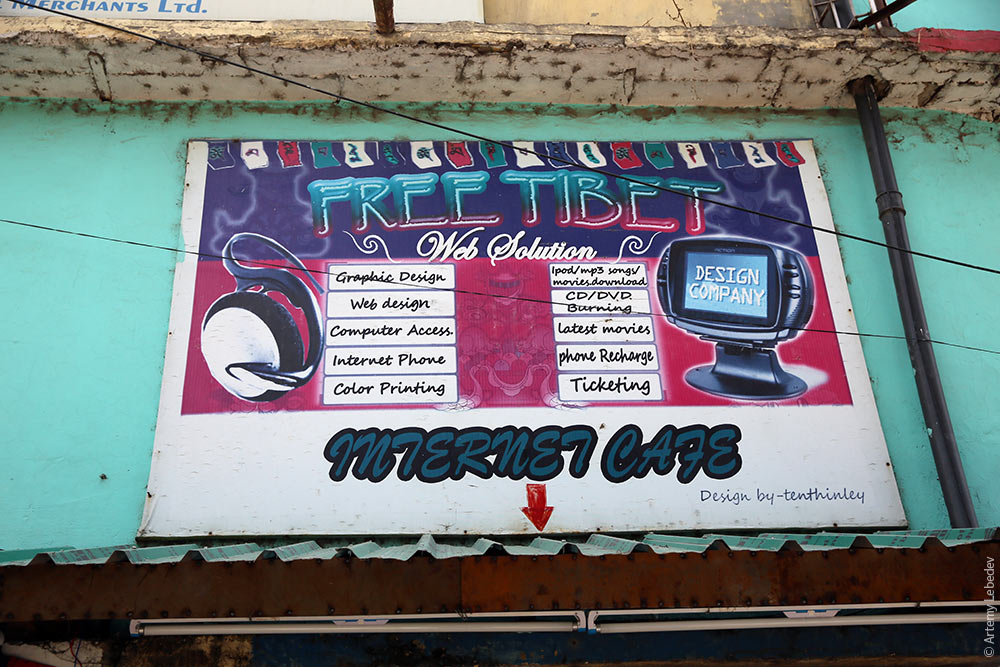 Office plankton from around the world comes here during the brief high season in search of enlightenment. I can’t imagine anywhere else you’d decide to put on this get-up to go wolf down some eggs in a café. 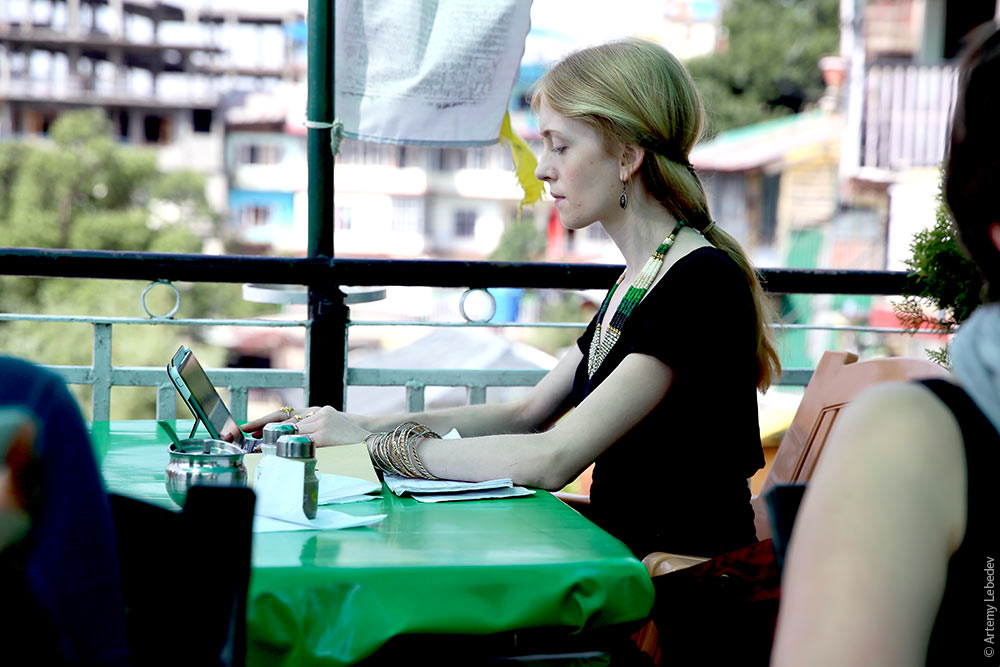 India Post. 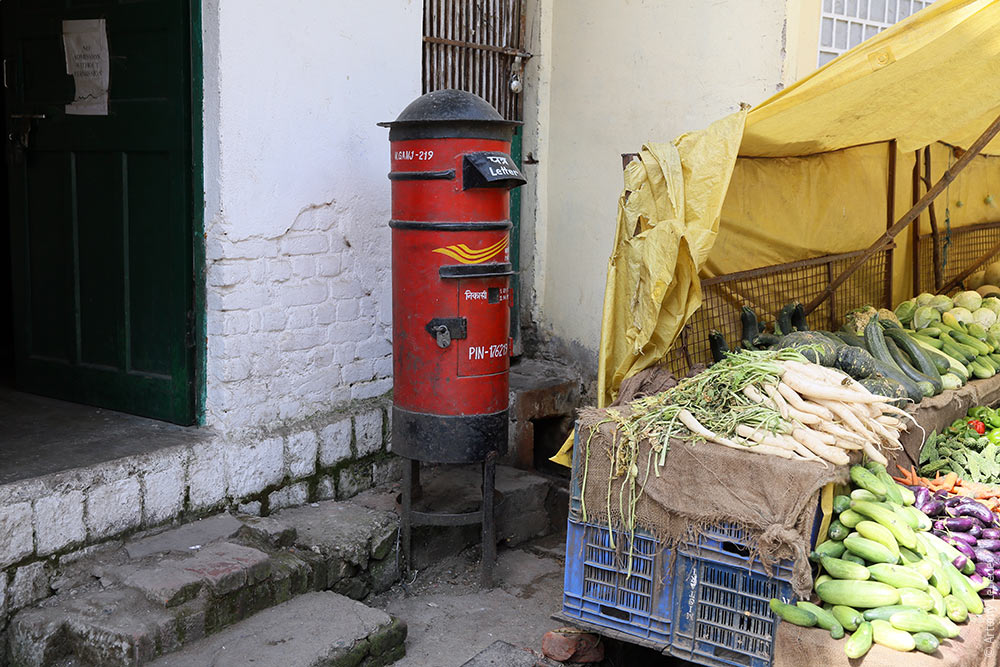 Laundry service. Washed clothes are store on the shelves behind the glass doors. 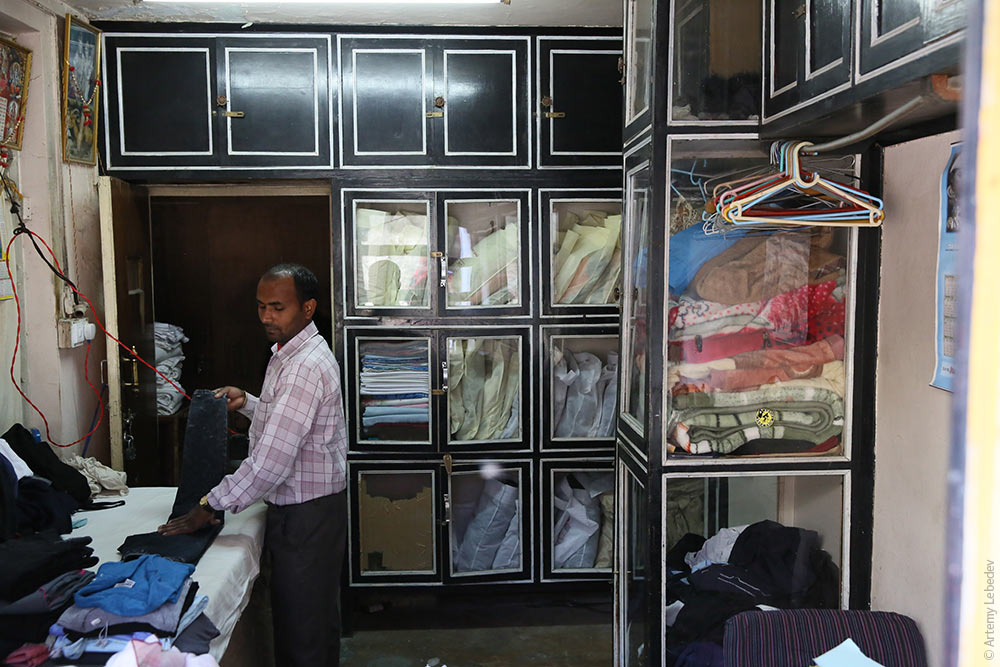 The city is surprisingly soulless and empty. It is somewhat reminiscent of Ushaia in Argentina: people come here in order to immediately leave again — some go hiking, others opt for paragliding. In the city itself nothing has time to put down roots because the majority of locals only came here to work for a month or two during the high season. Hence the thing to do is shop, shop and, you guessed it, shop. All members of the expedition party bought an item of clothing. Enlightenment indeed! 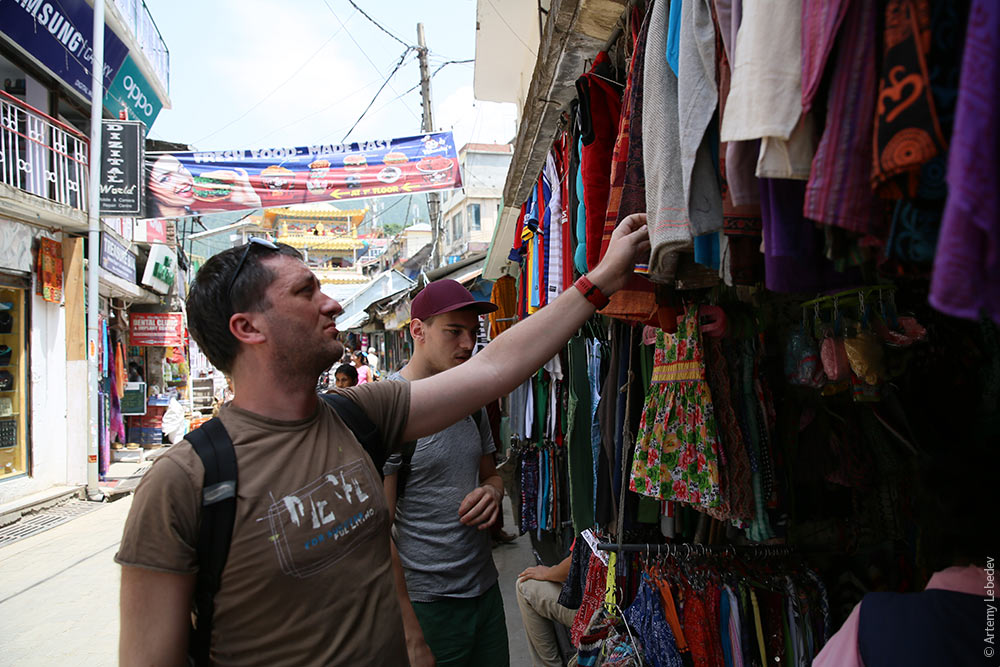 A boundless vista opens up behind the endlessly depressing souvenirs. 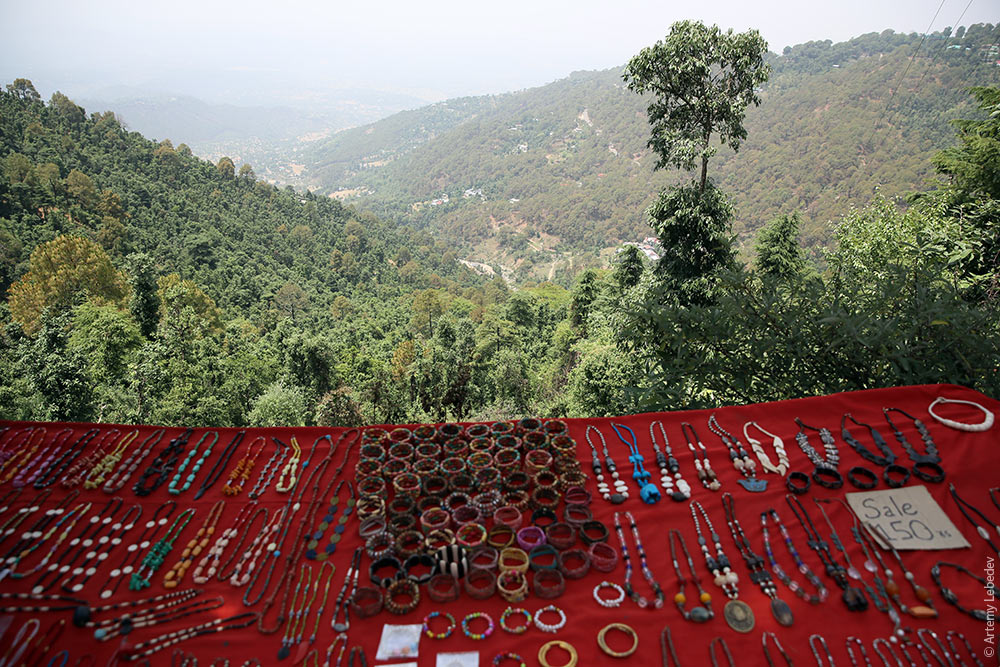 For some reason, manhole covers in Dharamshala absolutely have to stick out about five centimetres above ground level. 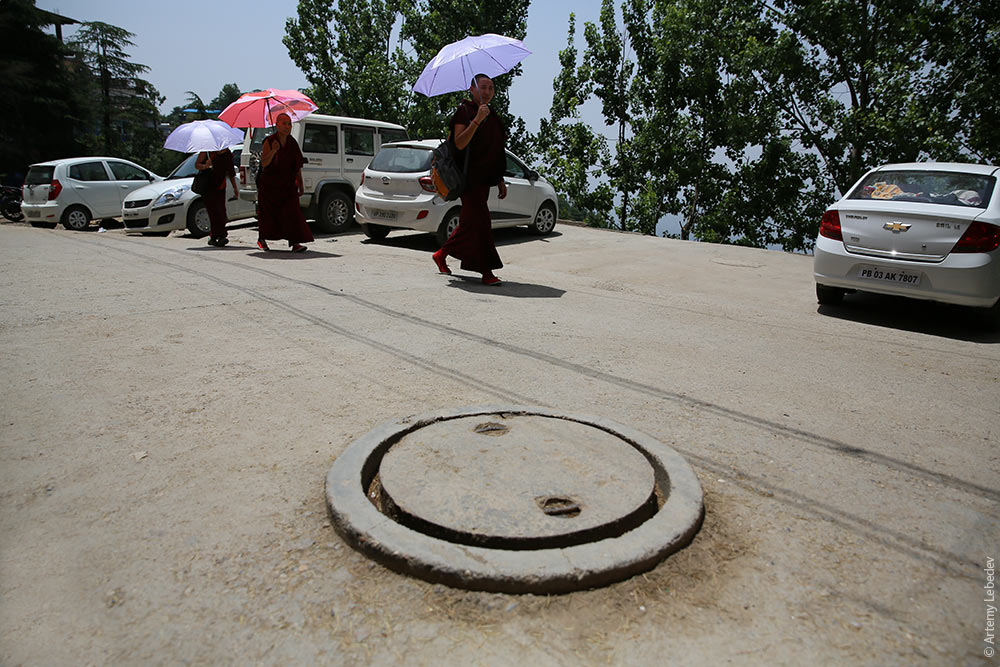 The banana trade. 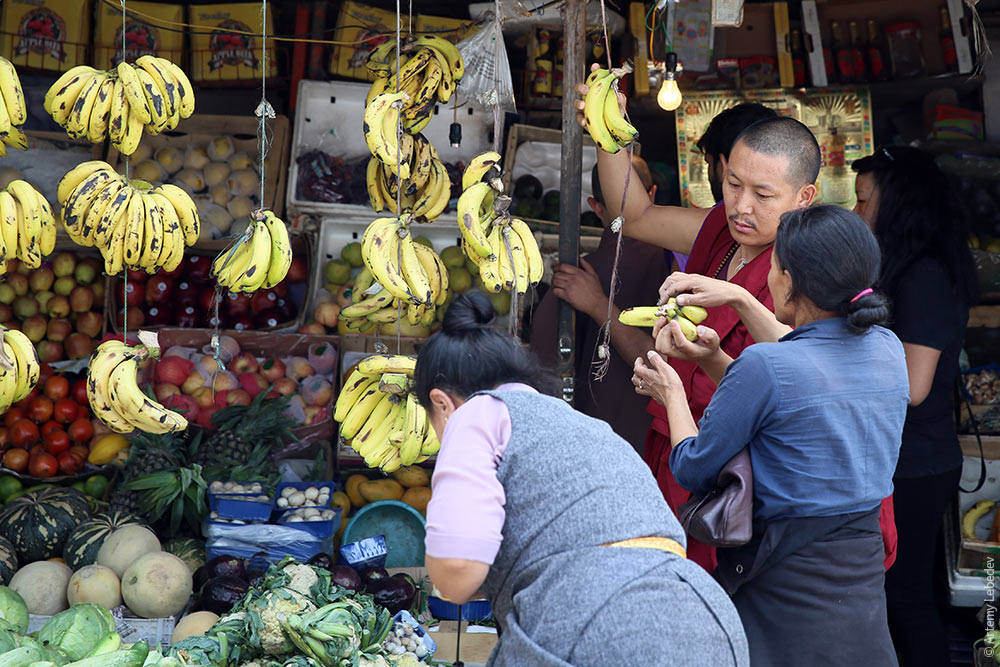 Women work at construction sites and this is considered perfectly normal. No one can haul a cement-filled basin on their head as well as a woman can. 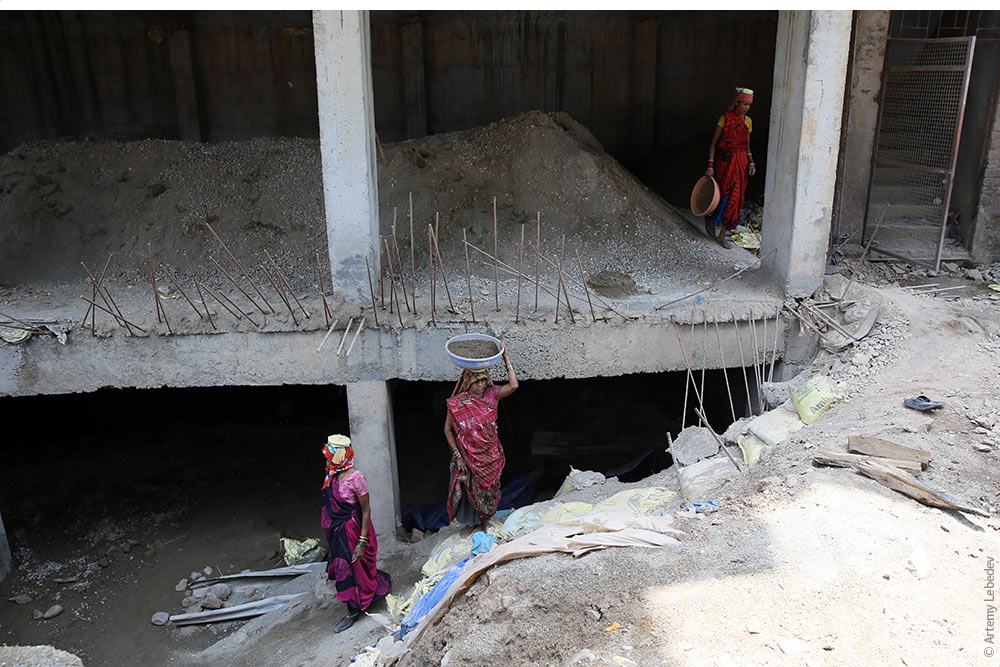 Two representatives of one of the male professions — painters. 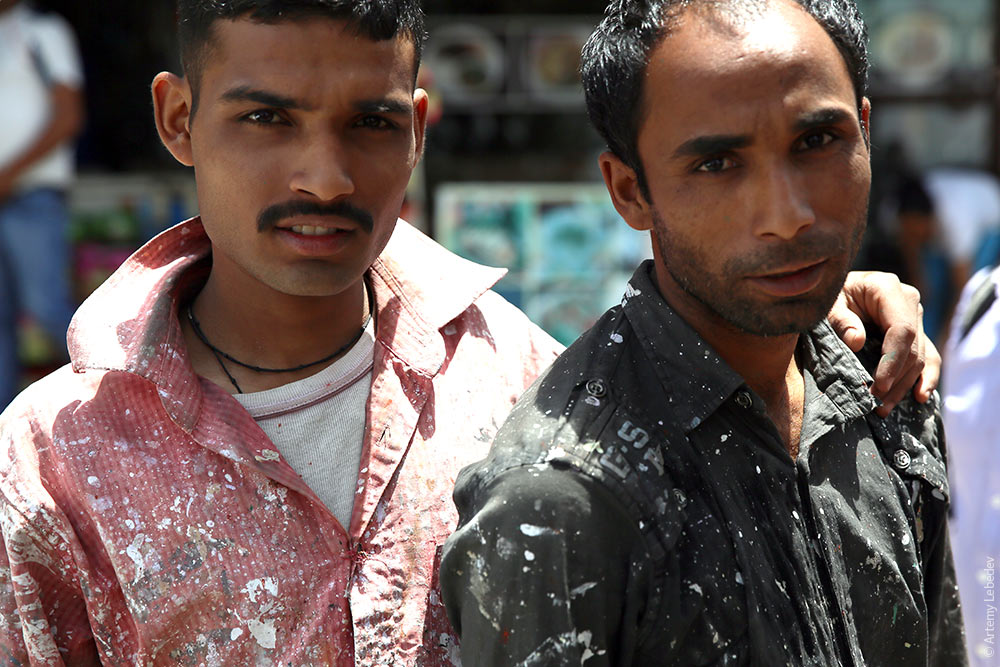 The water supply system is quite something. A separate pipe carries water to each subscriber. 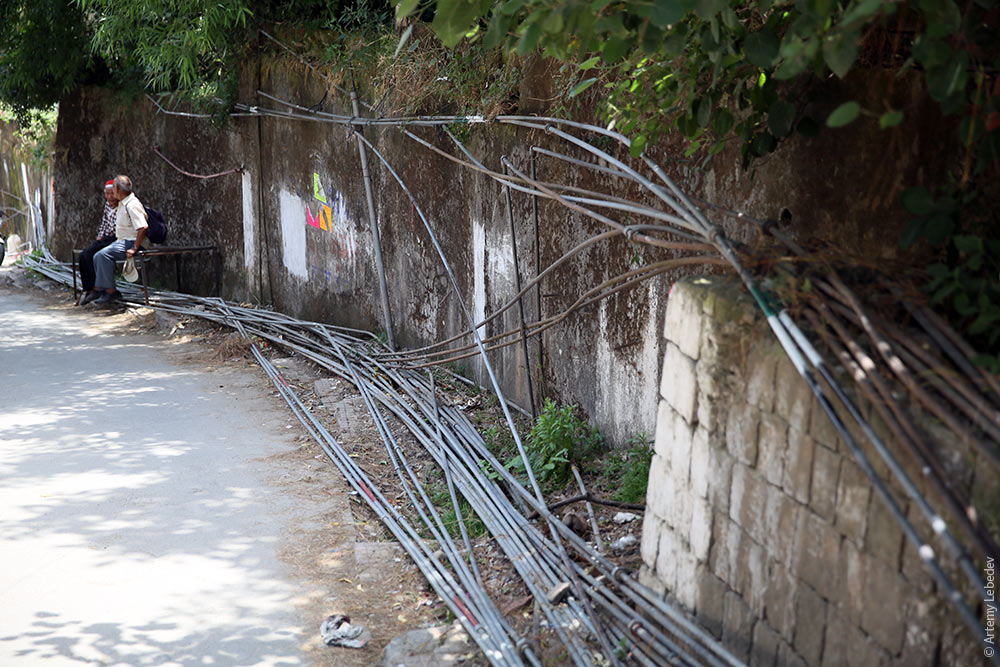 Bins the Dalai Lama can throw his rubbish in. 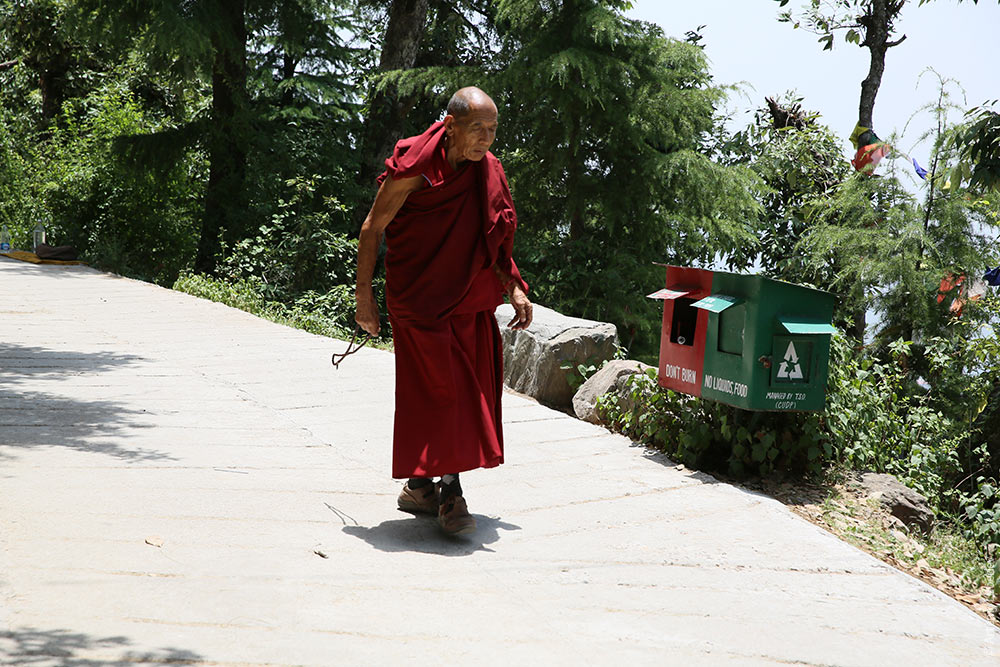 A stately fence surrounds the Lama’s residence. 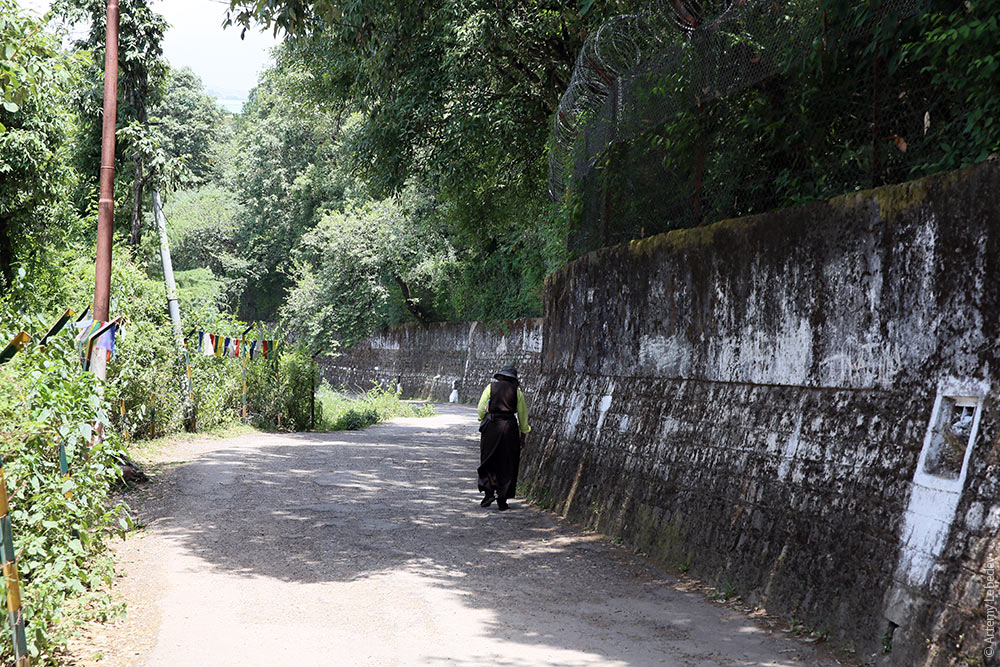 Portraits of those who self-immolated in the name of Tibetan liberation hang inside. They are dropping hints: there is still space available for more photos.  A wise word of warning. 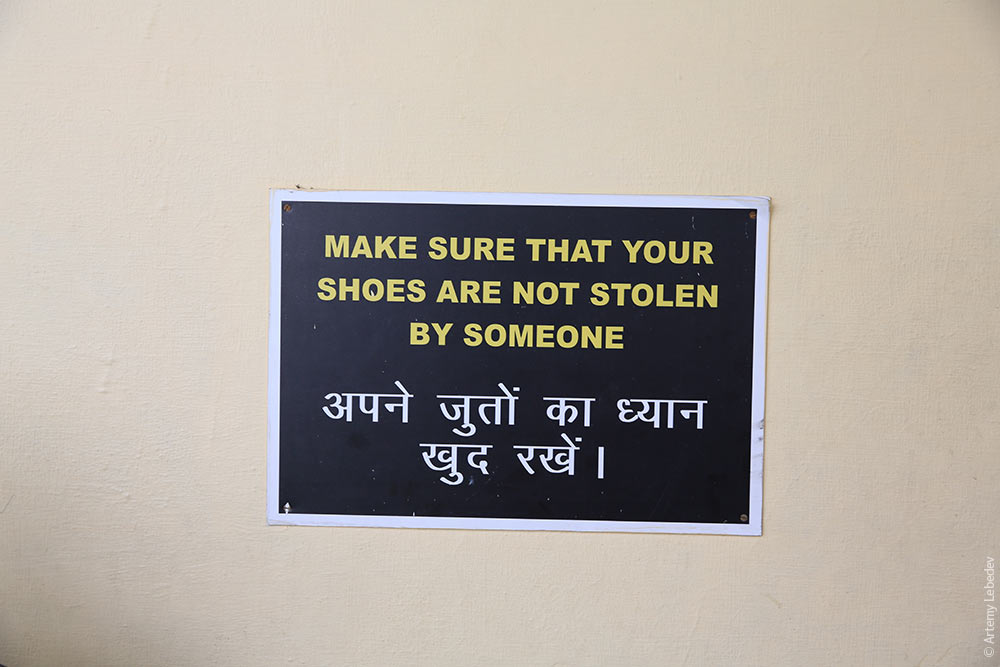 A car floored it uphill when it was passing right next to a monk. He spent another minute dispersing the exhaust fumes with his cloak. 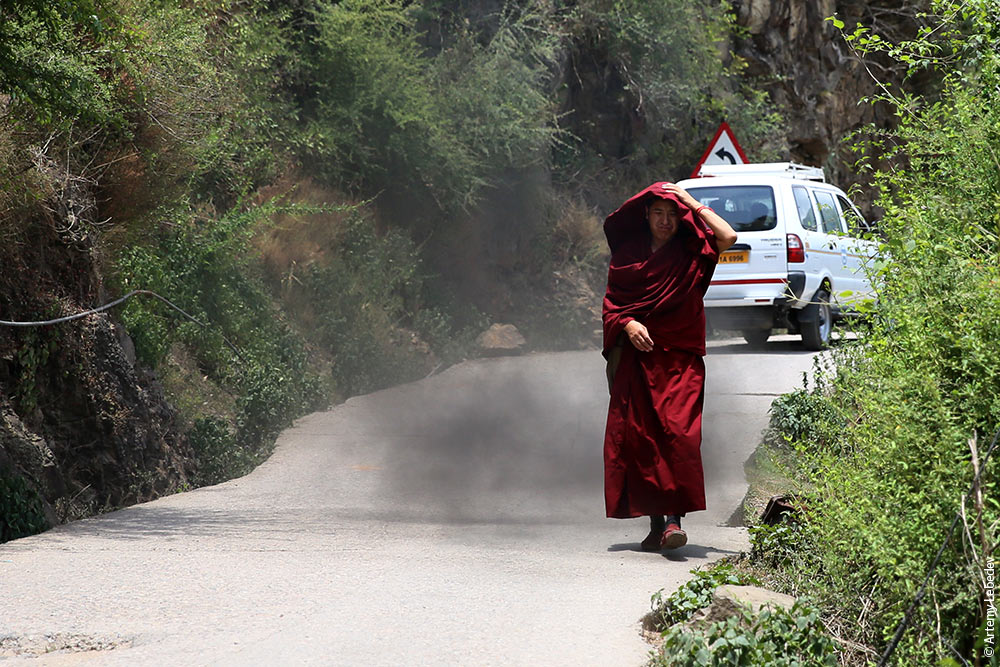 You see, Buddhism does bring moments of joy. 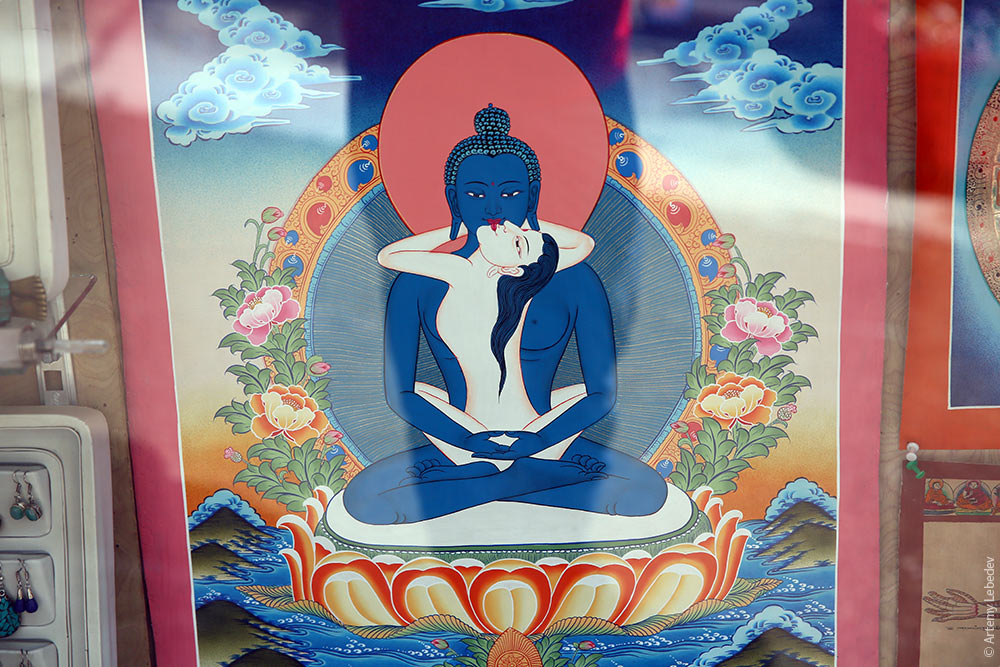 JammuMapA legacy of the odious colonialists. 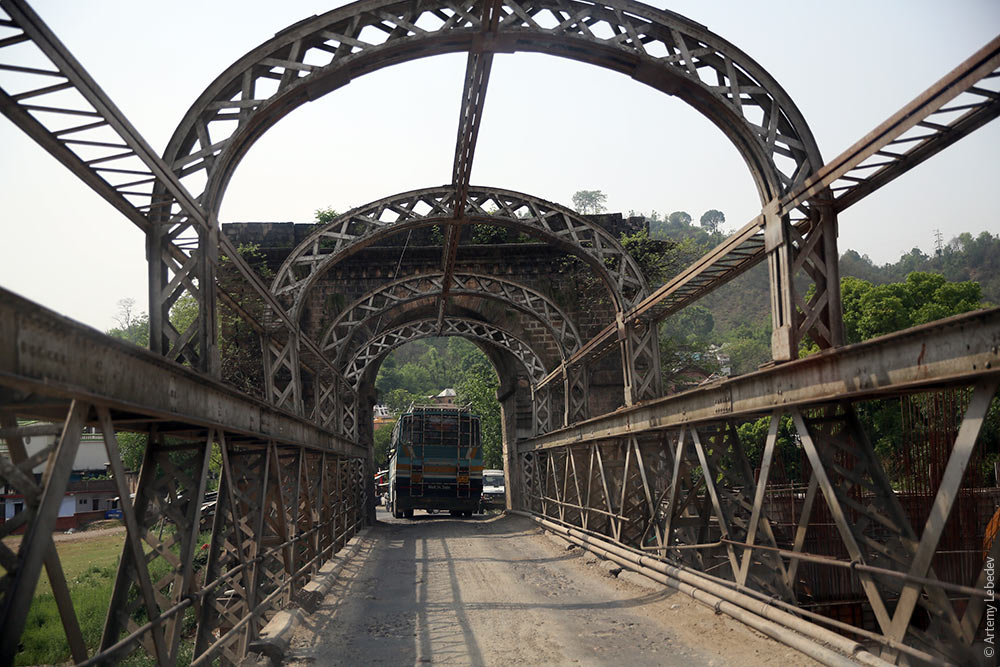 From time to time, cows can be seen on the roads. For some reason it’s said that cows are so sacred in India that they can just stroll along the road and people won’t run them over. So does that mean it’s normal to run over cows in Russia? 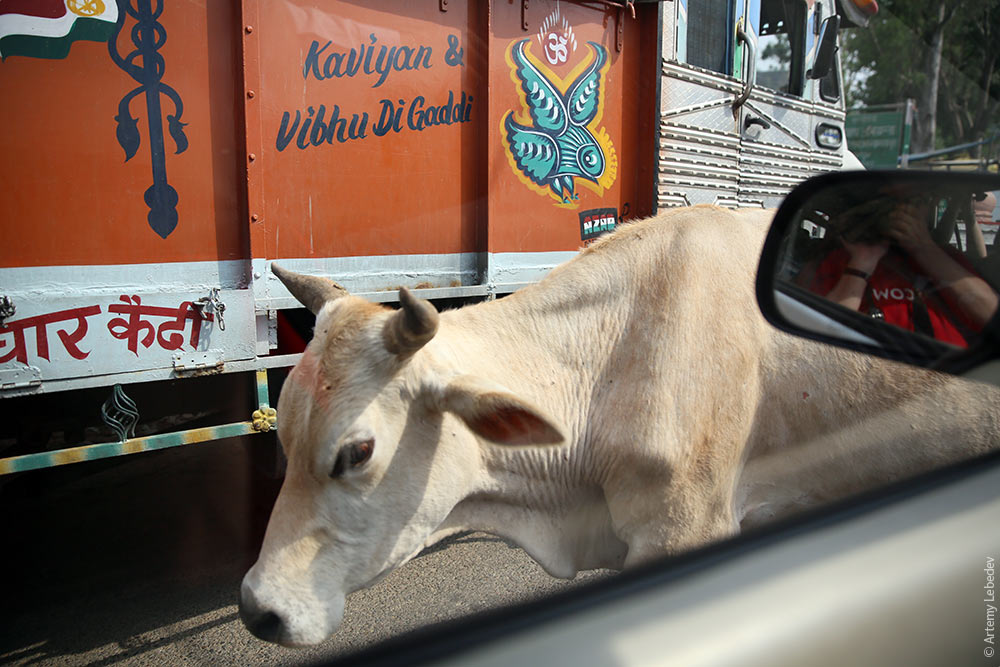 On the back of every truck it says blow horn or horn please. In this case the driver went the extra mile and also installed a retroreflector.  The “Swastika” diagnostic laboratory. 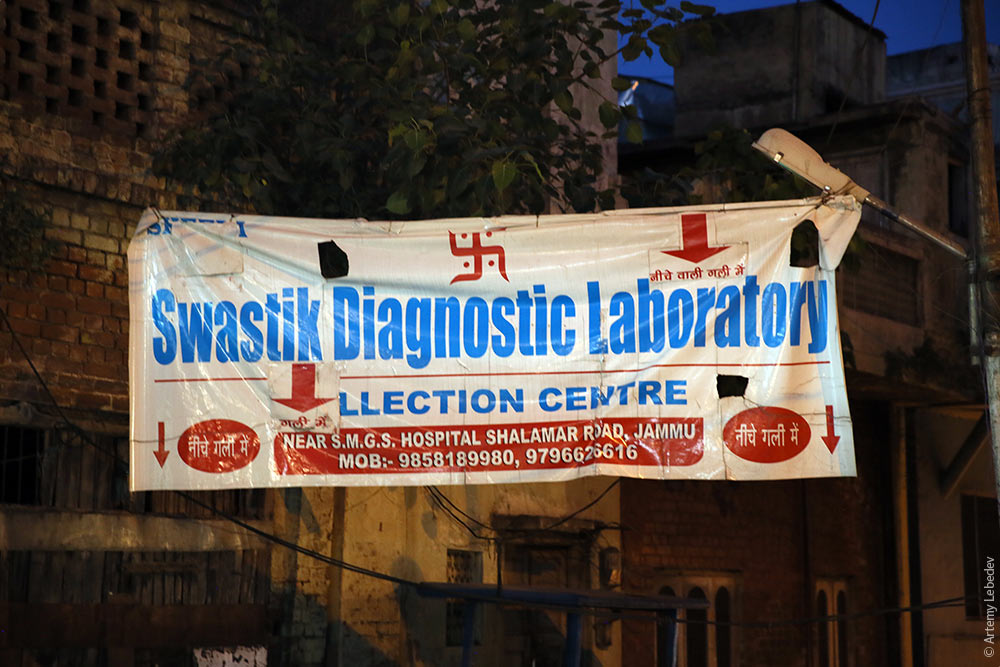 The centre of Jammu is very lively and noisy. Just like Hong Kong on the weekends. 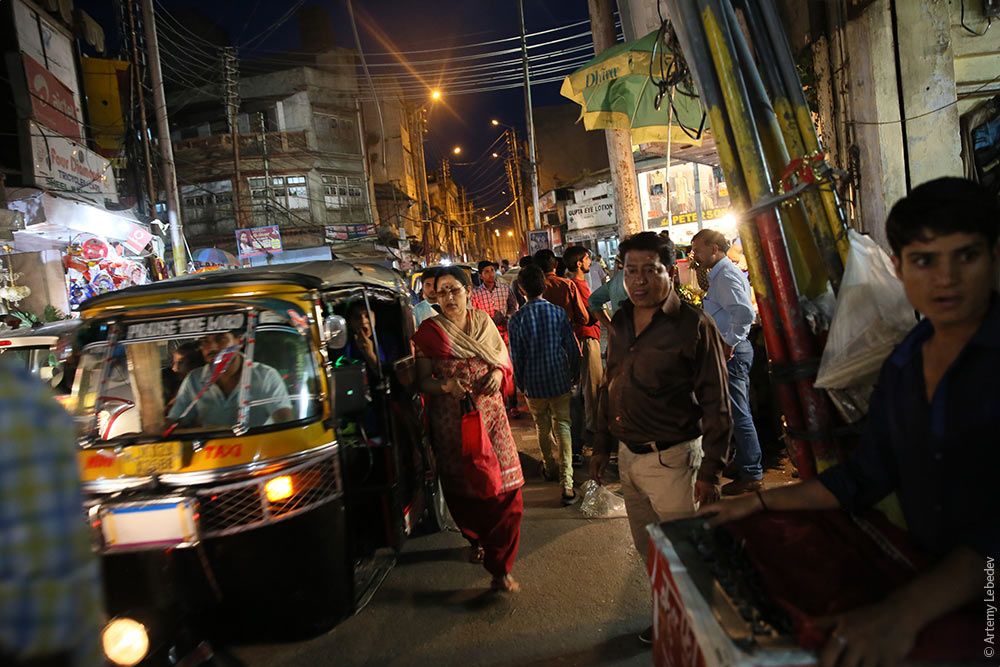 They don’t drink much in this town, but there are a few wine shops. The locals are sold bottles wrapped in newspaper, but there’s also some sort of tea- coloured swill in small plastic bags you can get without any wrapping. 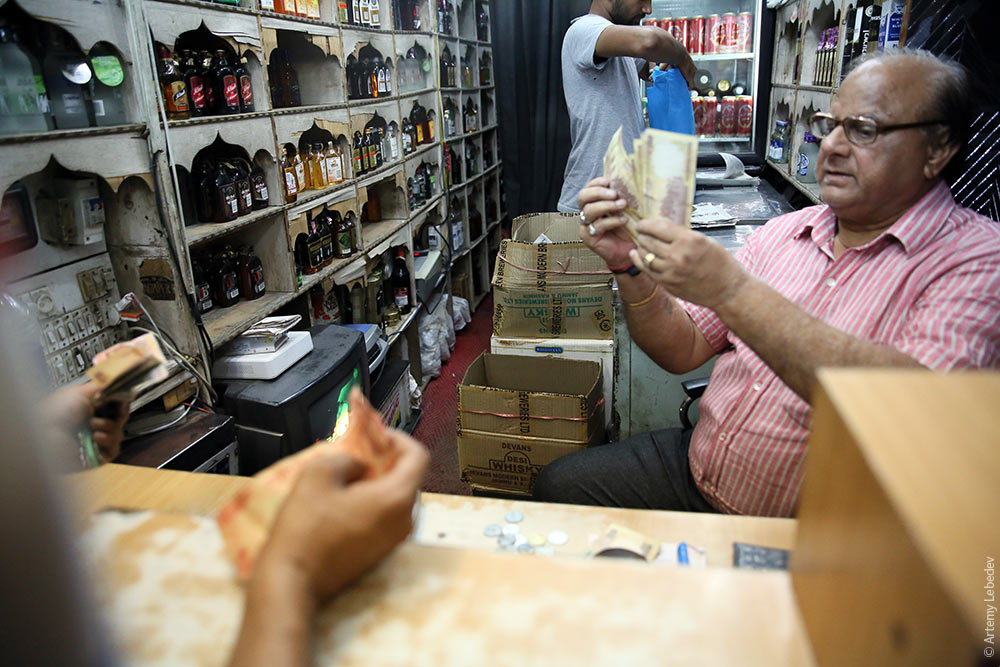 The view from our hotel. 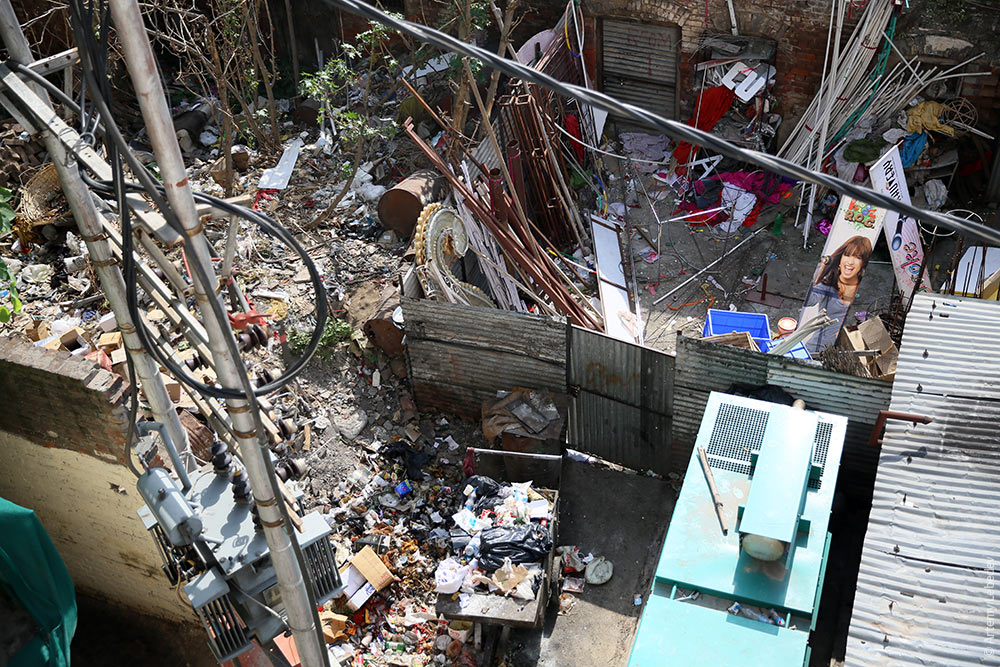 Policemen with sticks (some aluminium, some bamboo). 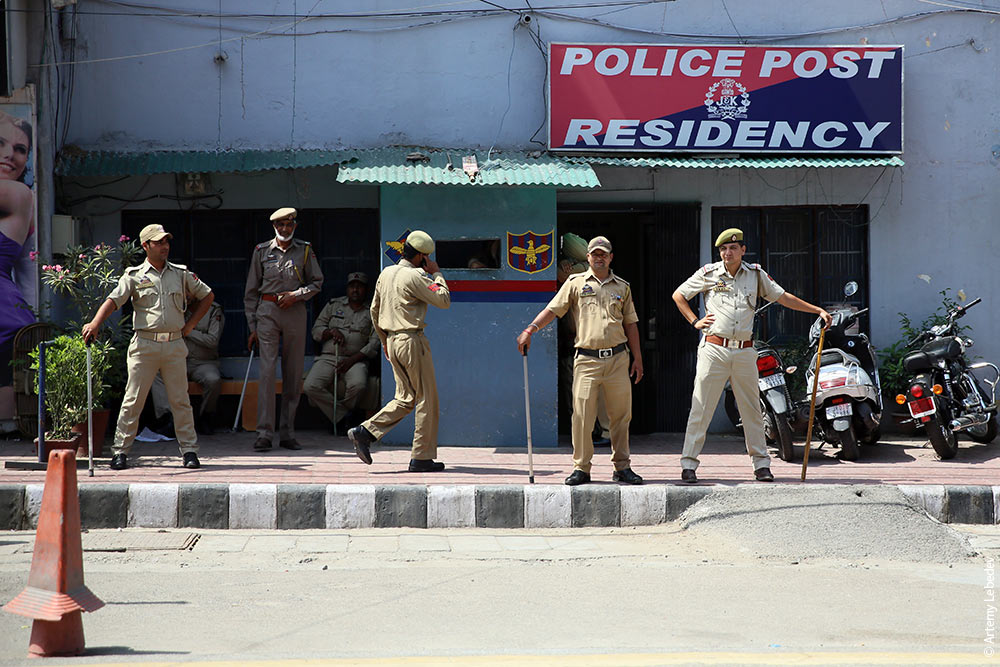 In Jammu everything was closed in the morning, on top of that there was some sort of strike on. People with yellow flags drove through the streets noisily, trailed by an exited crowd. The owners of the few stores that were open sat outside and shouted approvingly at the crowd as it went past them. Local reporters took photographs of us. Or perhaps they were informants who thought that we were there to report on the strike, after all, we had the same kind of cameras. We took pictures of each other. 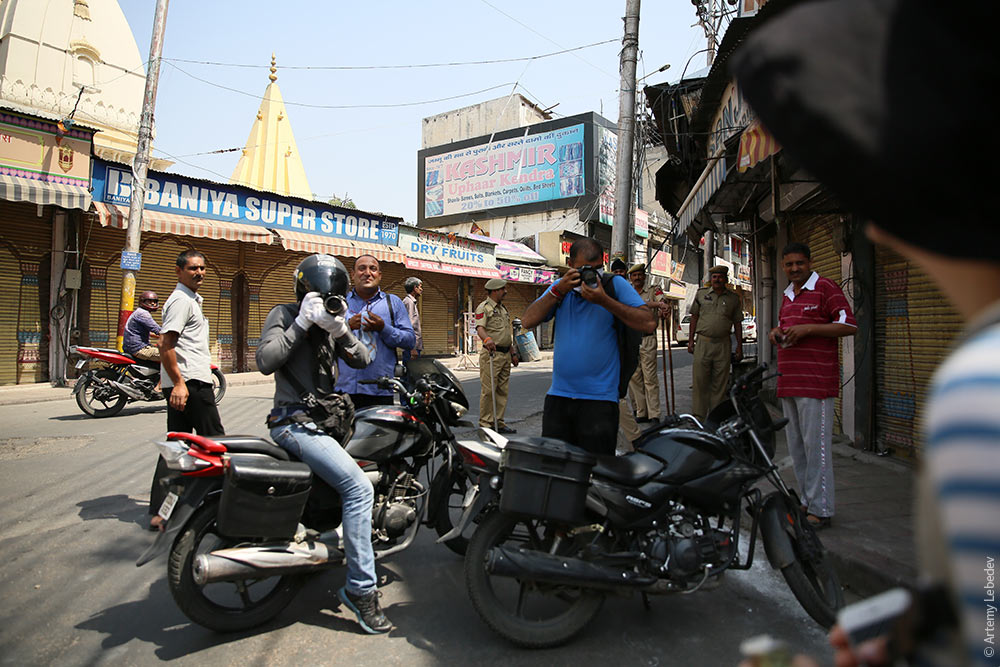 A beautiful city standpipe. 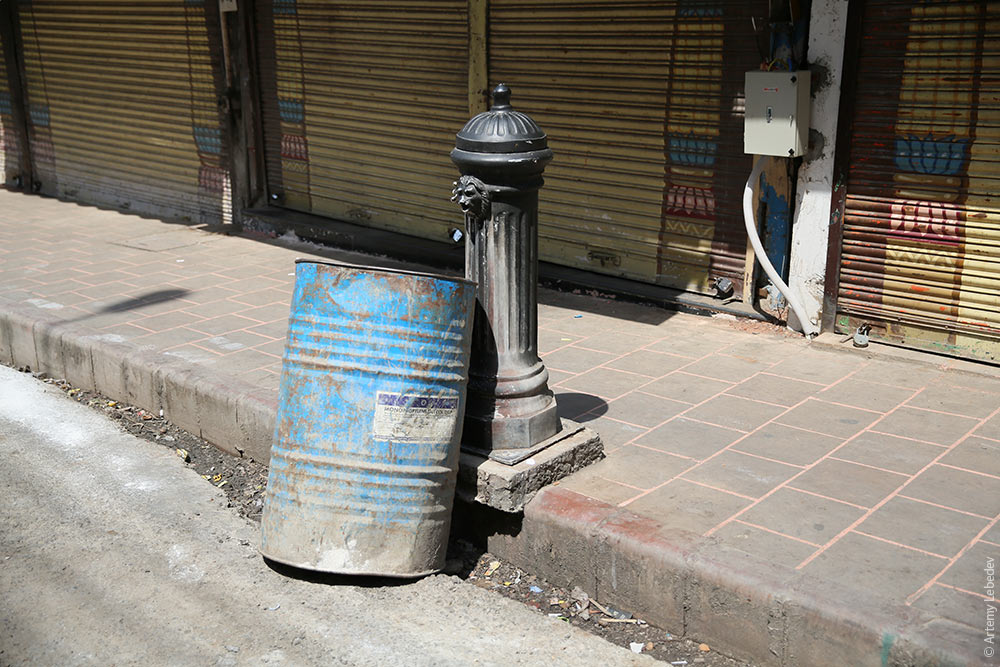 Modern architecture. 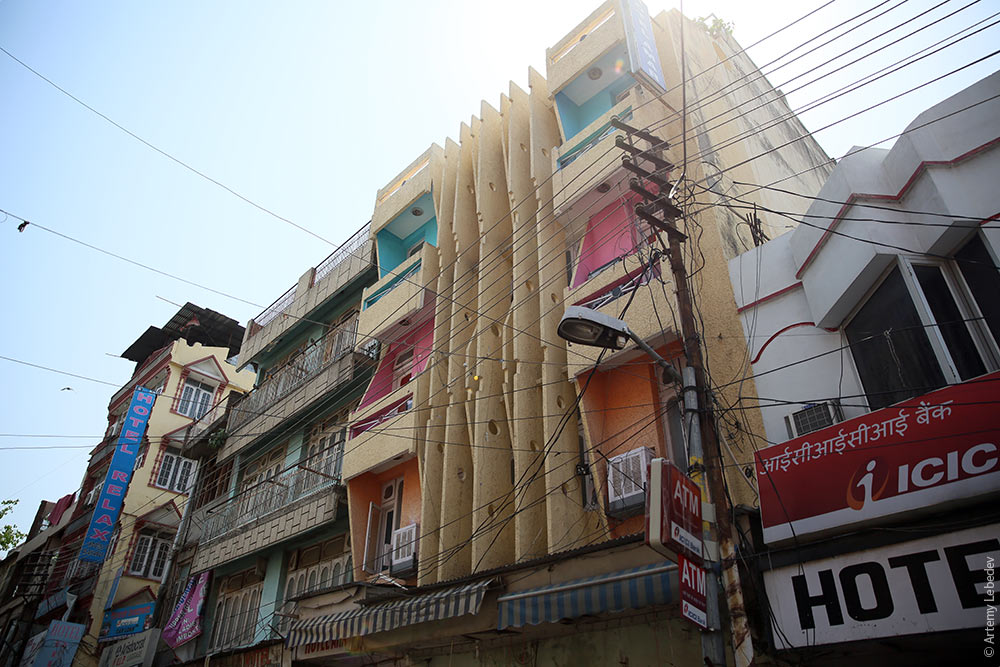 There’s writing on plastic bottles asking you to crush them before throwing them out. The rubbish dumps take up enough space as it is.  In India they have a simple way of dealing with rubbish: first they throw it on the side of the road; then they set alight the pile that has built up. 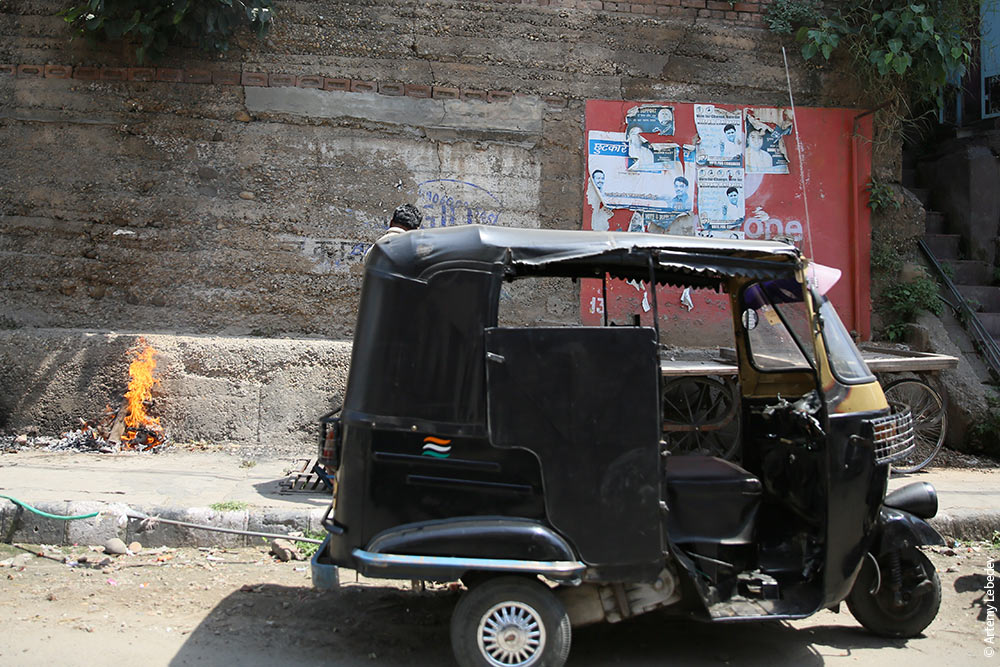 The only woman in the world who will never say, “Don’t try that on me, I ain’t no slag!” 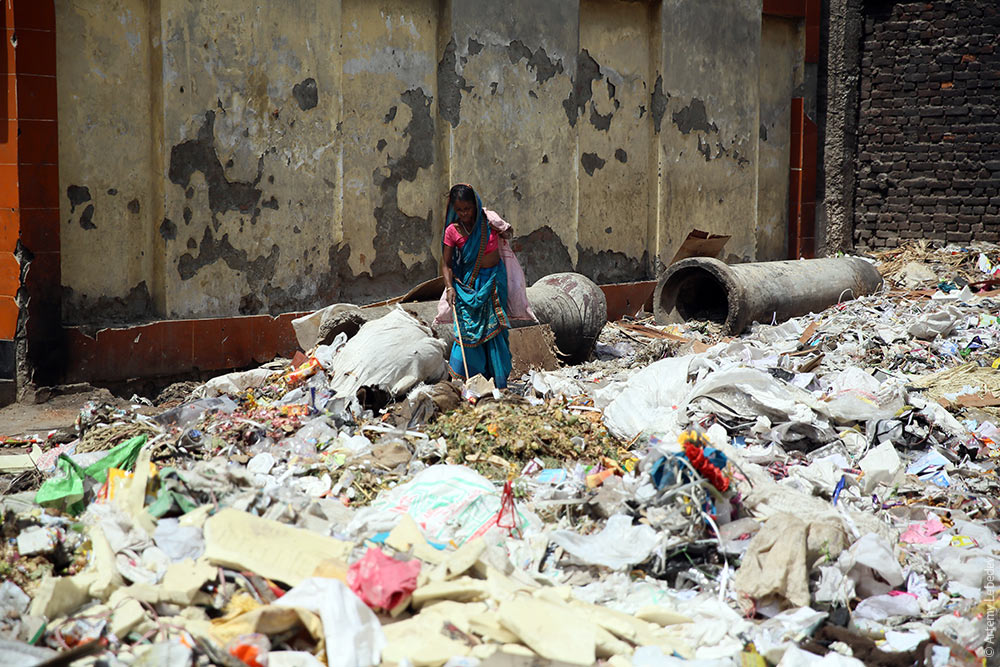 City-dwellers. 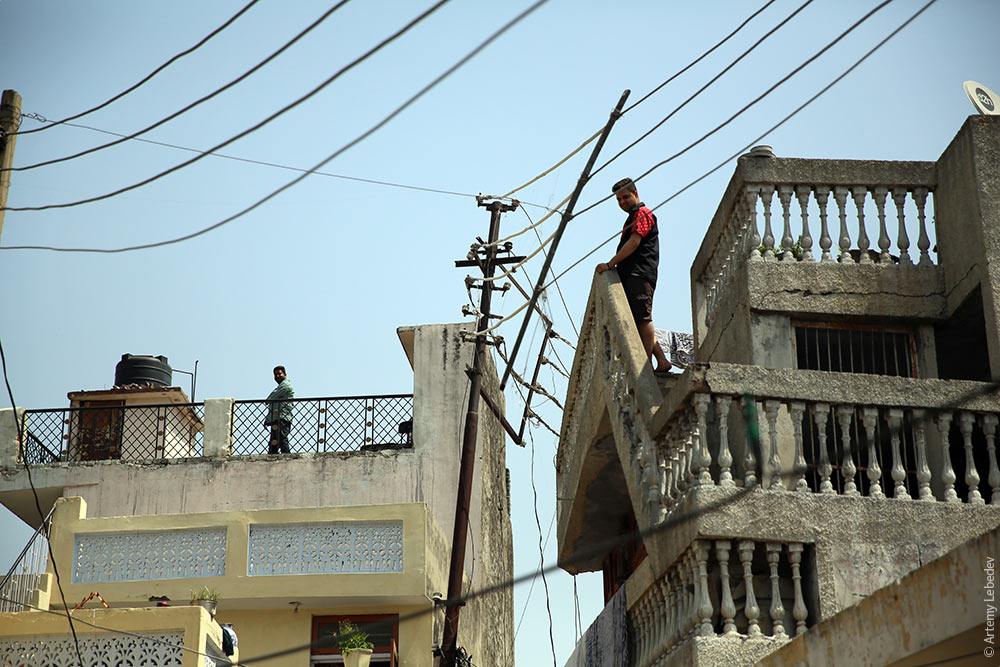 A passage that’s one and a half humans wide. 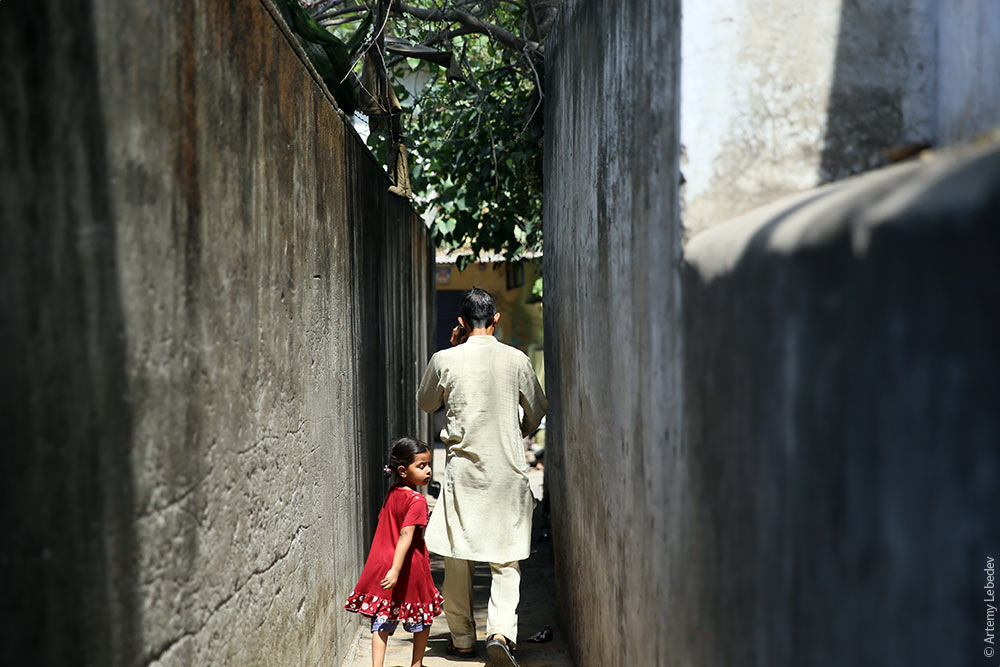 The India Ethnographic Expedition party in the mouth of a fish. 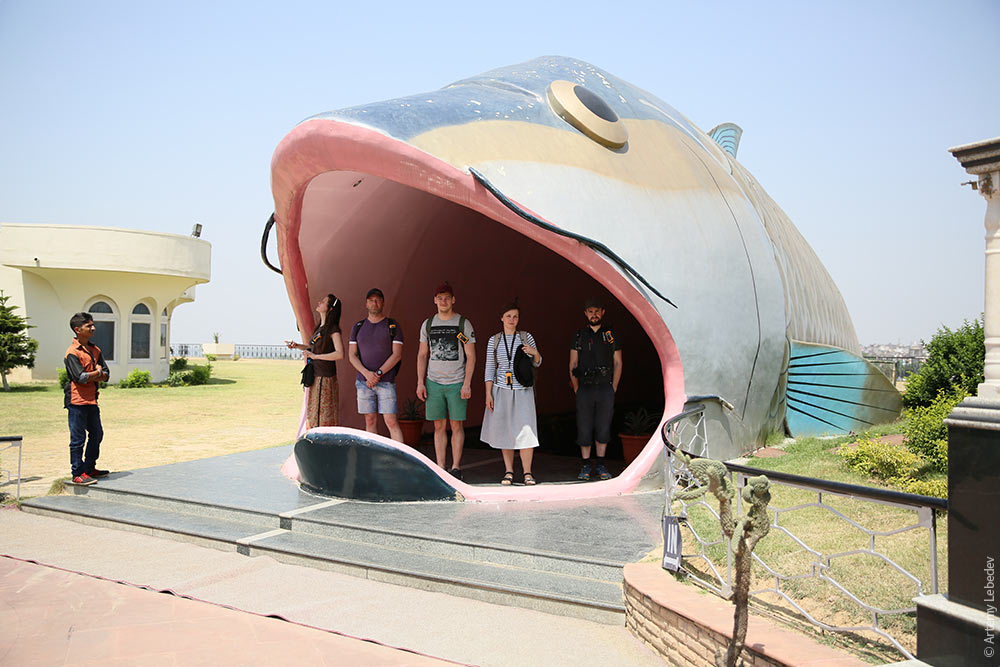 From the head the stairwell leads you underground, where the aquarium is located. More precisely, lots of aquariums. At the end of the gallery there’s a small cabinet of curiousities. 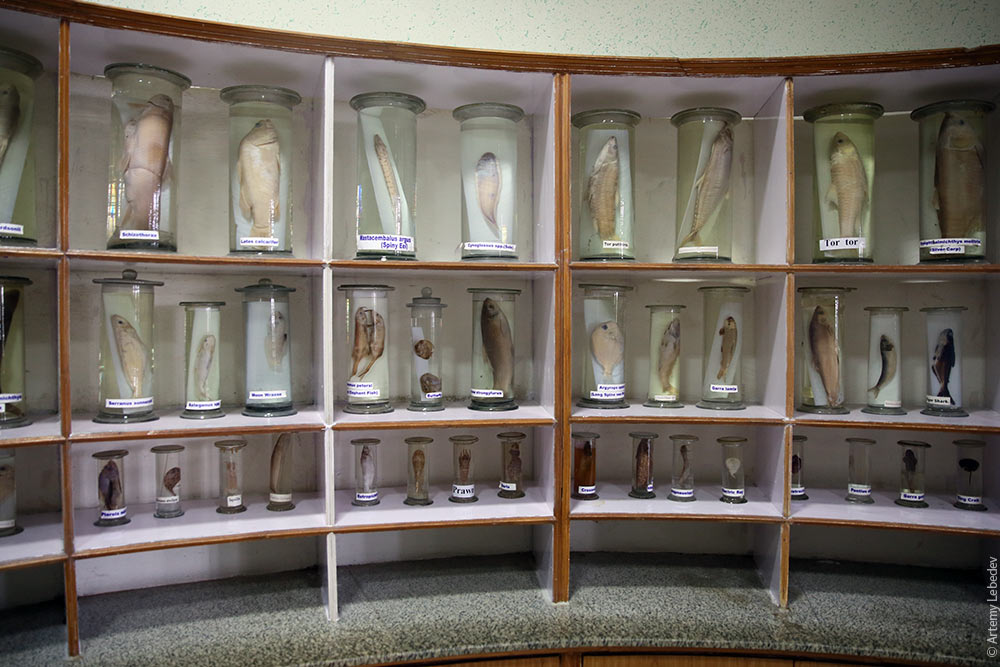 There’s also a poster explaining how to prepare the fish. Indians are a practical people. 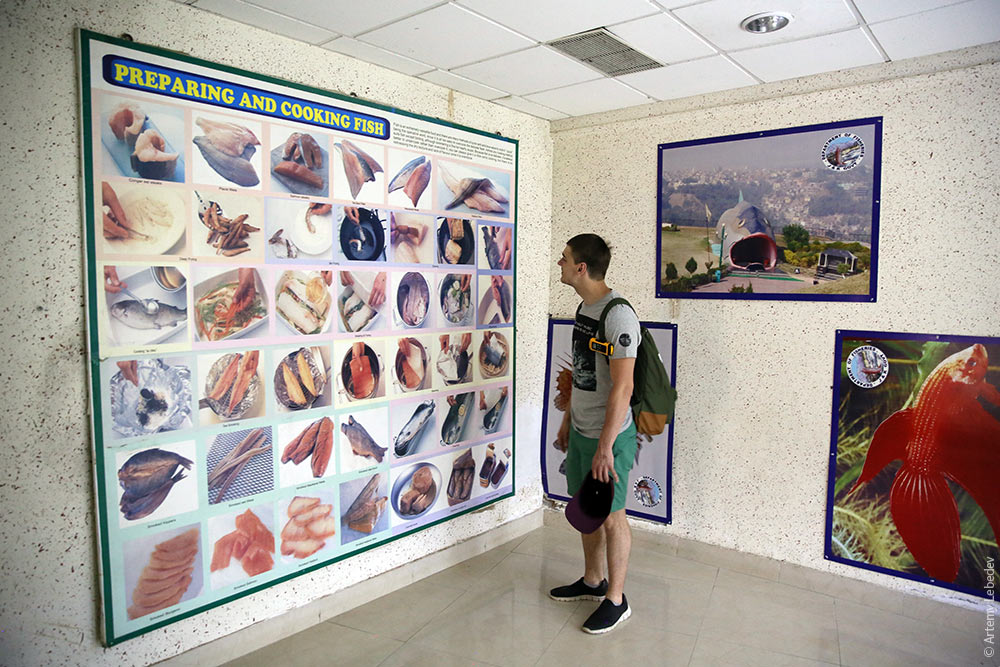 View of the city. 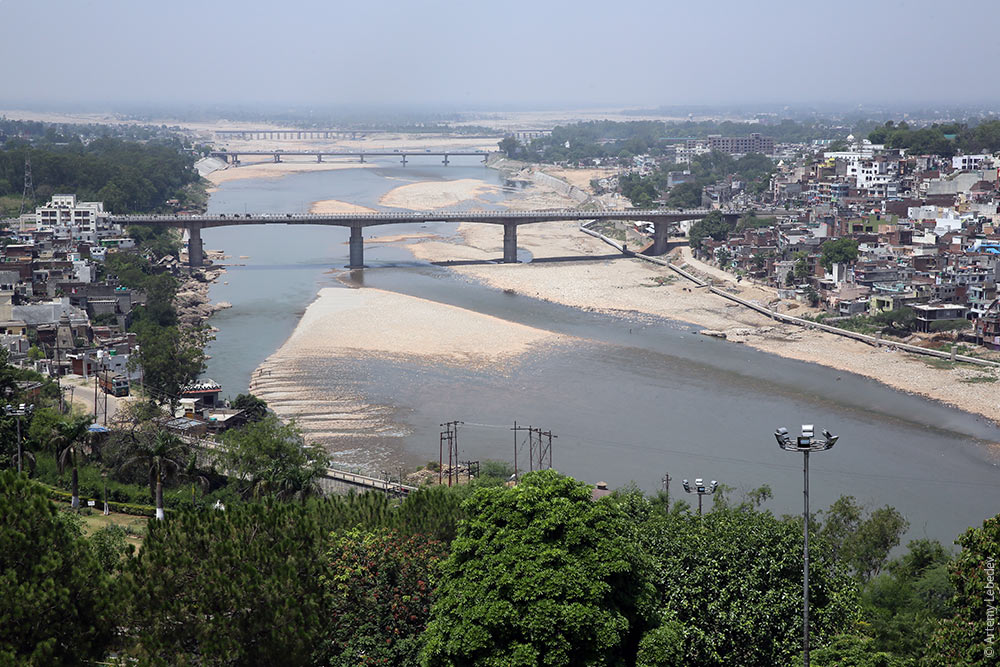 Looks just like an ordinary fence. But it isn’t — notice the swastika. 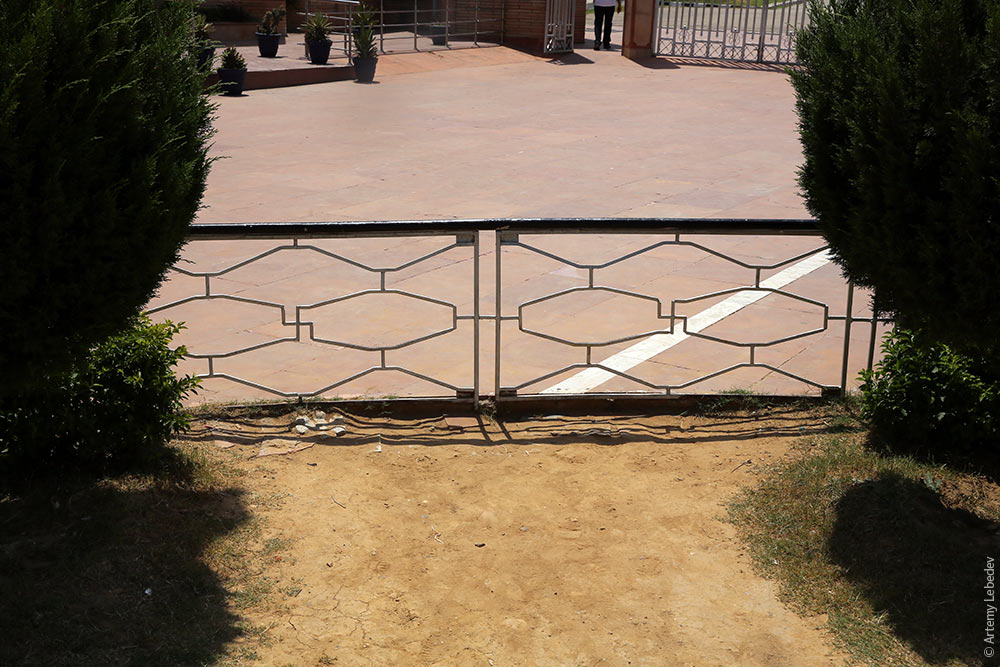 The sheep is lounging about; the monkey is polishing off a watermelon rind. 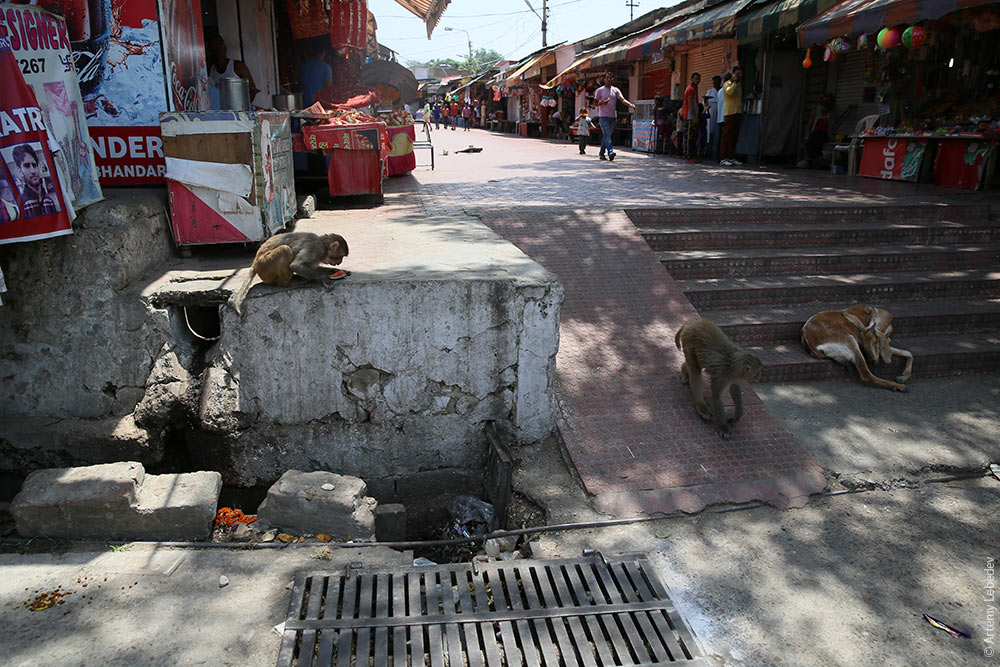 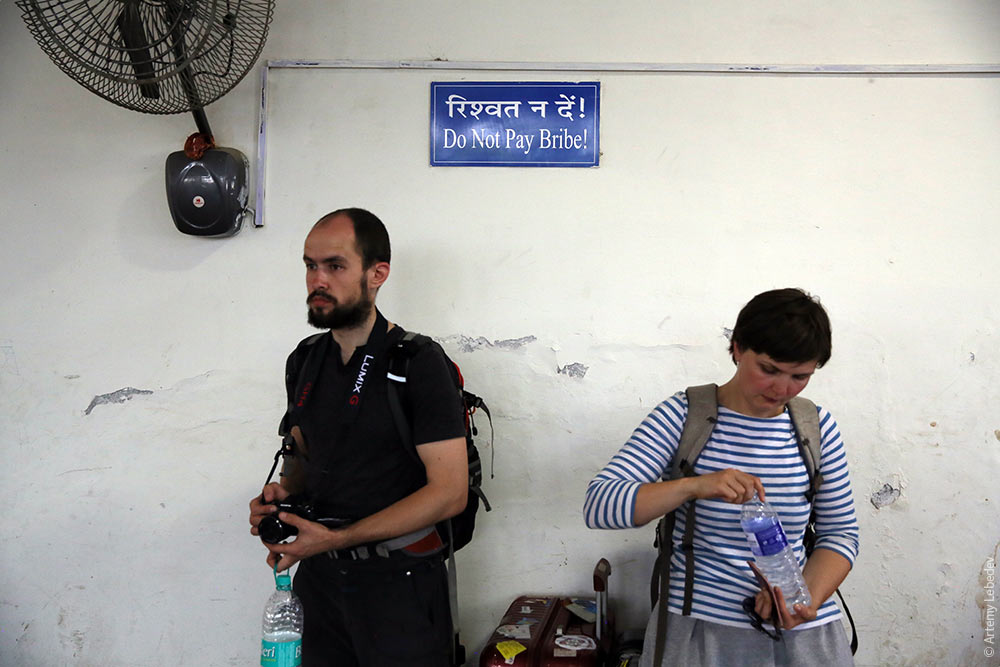 |